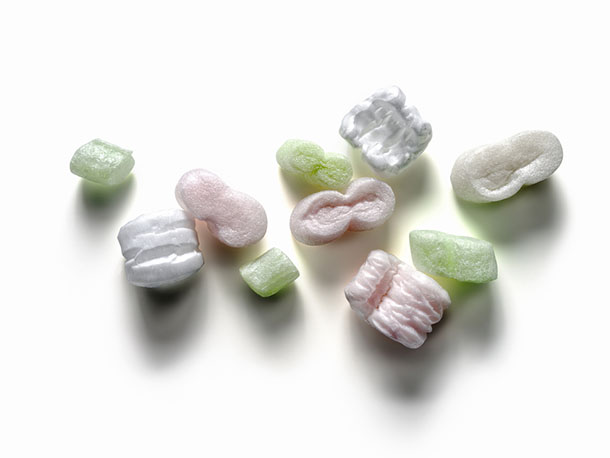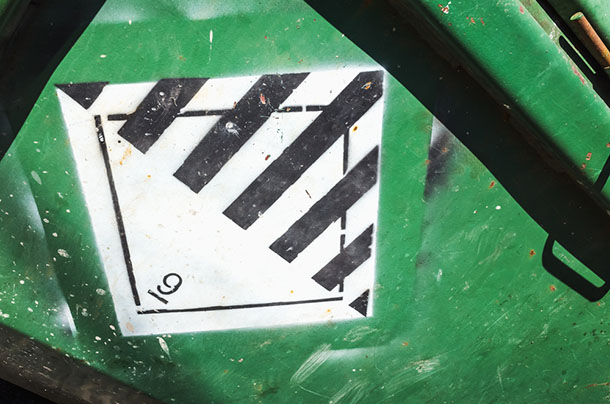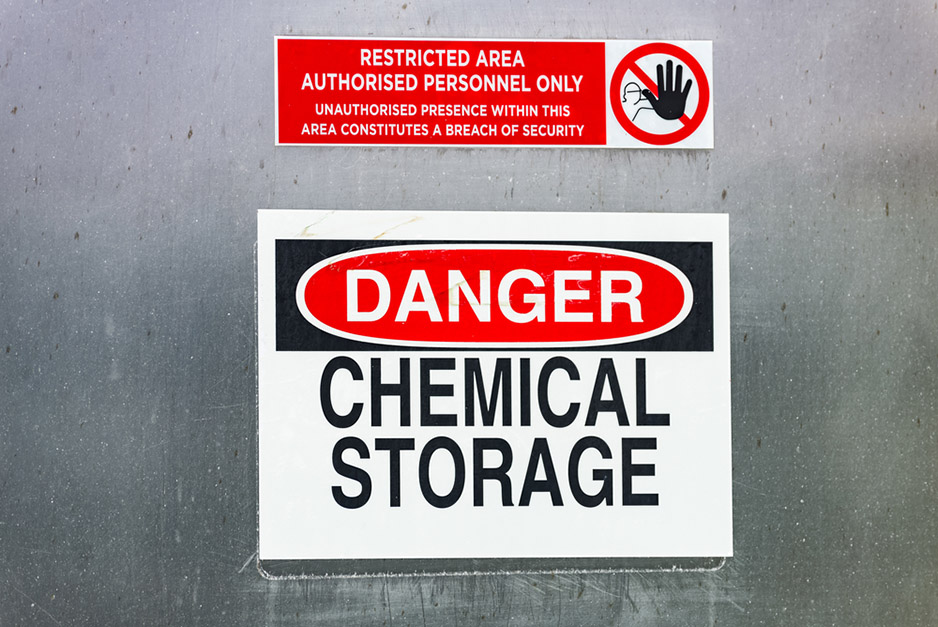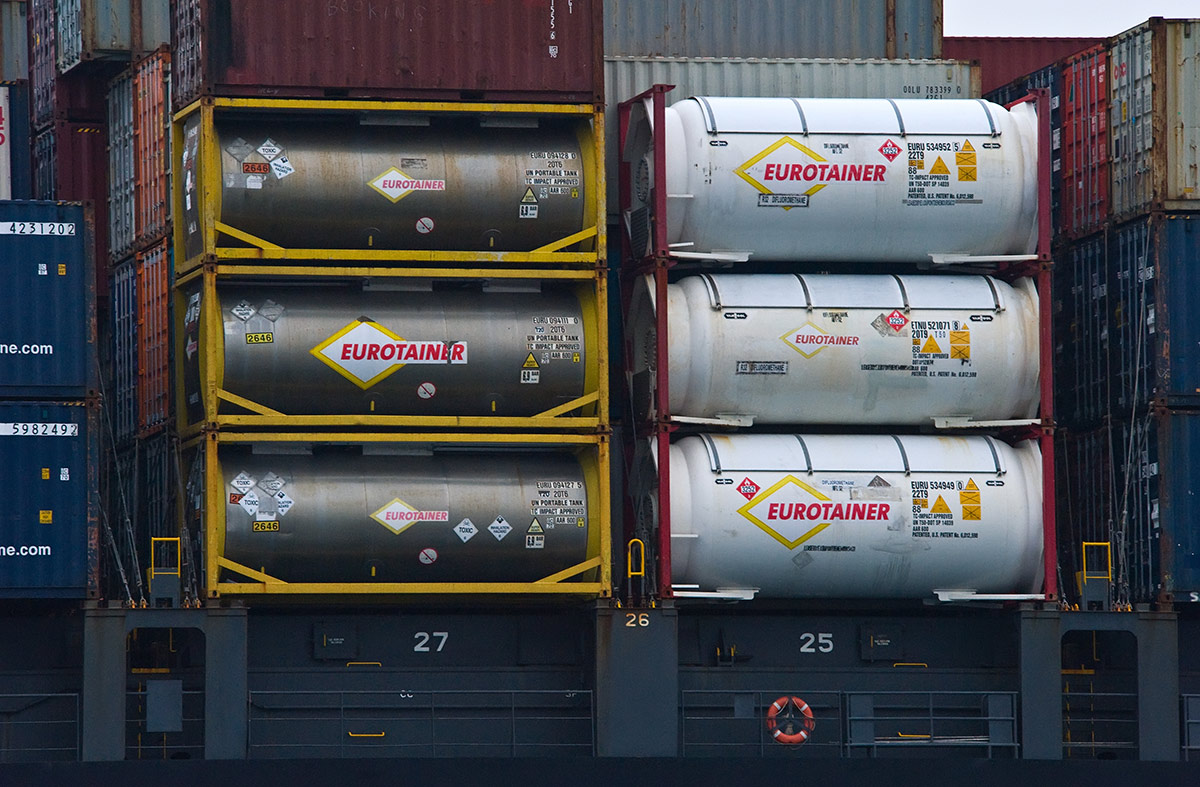Everything we use on a daily basis was, at some point, invented. Whether by the hard work of a dedicated inventor or by happy accident, everything has its point of origin.
Today, we’ll talk about the origin of something you might not often think about: packing peanuts. They’re used every day to ship many different kinds of goods all around the world– from office equipment to collectibles to toys. You might have wondered: Where did packing peanuts come from? Who invented packing peanuts? And how have they changed over the years? Air Sea’s packaging experts can shed a little light on these interesting questions.
Life Before Packing Peanuts
Before packing peanuts, old newspapers were the standard loose fill material for shipping most fragile goods. But as anyone who’s ever had their china broken during a move can attest, newspapers often simply aren’t that effective as a shock absorption material.
Around the time of World War II, a researcher at Dow Chemical named Ray McIntyre invented foamed polystyrene, better known as Styrofoam. The new material was quickly put to work for all kinds of purposes–from cups to coolers–but it wasn’t until a few years later that Styrofoam’s potential for the shipping industry was realized.
History of Packing Peanuts
Polystyrene packing peanuts were first invented in 1962 by Robert E. Holden. Holden is one of the many important inventors whom we just don’t know much about—details of his life have largely been lost to history. He never achieved any real fame, but his invention changed the world of consumer goods.
What we do know about Holden is that he also invented a new kind of machine that processed polystyrene strips, and that this machine used a heating and steaming process to increase the cell sizes of the polystyrene foam. This fluffy, buoyant structure is why packing peanuts are so good for protecting all kinds of fragile goods. They absorb shocks extremely well, and their interlocking design further helps them keep cargo immobilized and cushioned.
Dow Chemical put packing peanuts into production in 1965, and the packaging material caught on almost immediately. Before long, businesses were using these versatile and inexpensive void fill materials to ship just about everything.
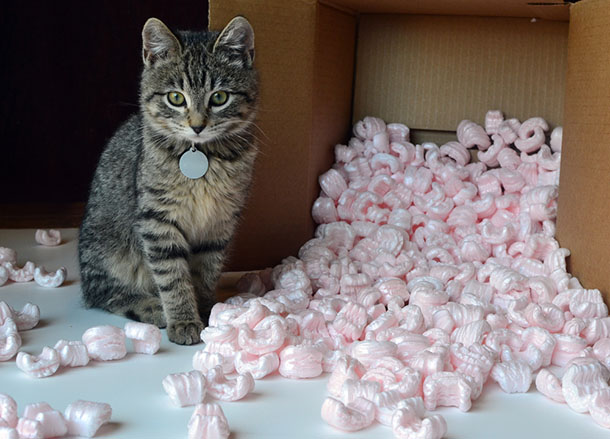
However, packing peanuts shouldn’t be used to ship a cat.
Variations on Packing Peanuts
As packing peanuts continued to be used around the world, many new types of packing peanuts have come into widespread use. They address some of the major downsides of traditional packing peanuts, including their environmental impact and their problems with static electricity.
Originally, all packing peanuts were made using virgin (i.e., newly created) polystyrene. Since then, many packaging manufacturers discovered that it was easier, cheaper and more environmentally friendly to recycle older polystyrene, and thus the recycled packing peanut was born. Often, you can tell recycled polystyrene peanuts by their distinctive green color.
Traditional packing peanuts have also been known to generate static electricity that can be harmful when shipping electronics. For anyone who wants to ship an electronic device using packing peanuts, special anti-static peanuts are now available. These peanuts are manufactured with an anti-static coating, which helps to keep electronics safe from static electricity discharge. Anti-static peanuts can be identified by their pink color.
The Next Advance in Packing Peanuts
Recently, many businesses have wondered about the future of packing peanuts. Two major factors have contributed to this.
First, the aforementioned issues with static have often meant that packing peanuts are no longer the preferred solution for shipping electronics (even with the availability of anti-static peanuts). Second, the environmental concerns of using packing peanuts have also made them less popular in an age when plastic and Styrofoam waste has become an important issue.
Air Sea Containers is now proud to offer the next step forward in packing peanuts—biodegradable sealed air packing peanuts that are made from special plant-based material. These biodegradable packing peanuts are specially designed to decompose completely, making them easier on the environment. They’re also fully recyclable, making them easier to dispose of responsibly.
Our sealed air eco-friendly packing peanuts also have other advantages over traditional peanuts. For one thing, they offer comparable performance to any traditional packing peanut material, and they don’t have the static electricity problems of Styrofoam peanuts. They also offer comparable or even superior performance to Styrofoam peanuts, so businesses can be sure that their cargo is just as safe with our new, greener peanuts.
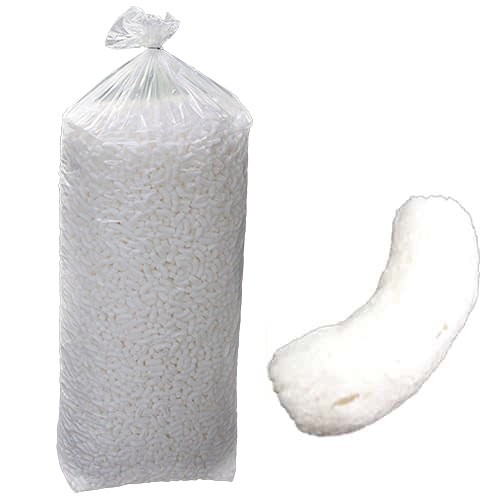
Air Sea Biodegradable Sealed Air Packing Peanuts
From the era of postwar innovation all the way up to today, packing peanuts have made it possible to ship the goods that make our lives better. If you’ve got questions about Air Sea’s packing peanut options, or any of our eco-friendly packaging materials, call us at (866) 596-9448 or contact us online for more information.
Browse Our Eco-Friendly Packaging Materials
